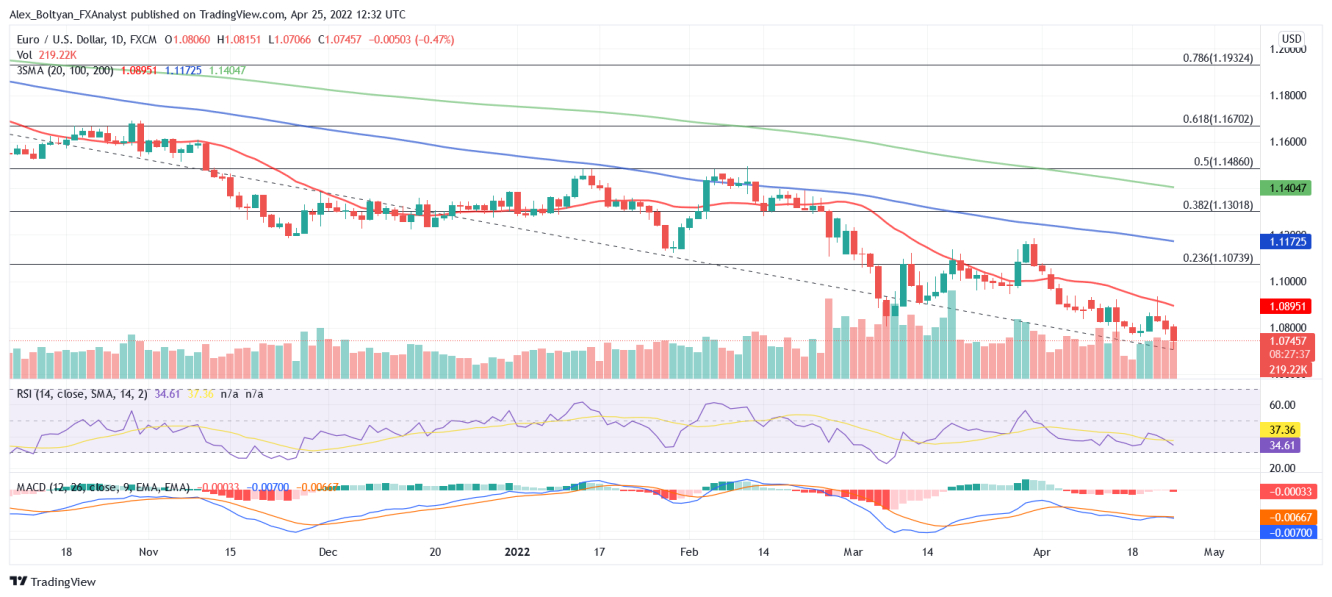The EUR/USD pair plunged during the European session and struck a fresh two-year low of 1.0707 before recovering modestly, as risk aversion continues to dominate markets at the beginning of the week.
The United States 10-Year / Germany 10-Year government bond yield spread widened on Monday, adding further pressure on the EUR/USD.
The euro remains on the back foot amid monetary policy divergence between the Federal Reserve and the European Central Bank, woes regarding the Ukraine war, and renewed concerns about global growth as China imposes tougher lockdowns.
The EUR/USD managed to cut back some of its intraday losses but remains capped by the previous cycle lows, now turned into resistance, around 1.0760. The short-term technical perspective for the EUR/USD remains bearish, according to the daily chart.
The RSI holds a steep downward slope below its midline, not hitting yet oversold levels, while the MACD remains in negative territory and shows increasing selling interest. At the same time, the price continues to set lower lows as it trades well below its main moving averages.
A similar picture is shown by the 4-hour chart, which favors a bearish continuation. A break below the 1.0700 psychological level would pave the way to the 2020 low of 1.0635, set on March 23 at the very beginning of the pandemic. The April 2017 monthly low of 1.0569 would be the next target for bears ahead of the 1.0500 area.
On the other hand, the EUR/USD needs to regain the 1.0890-1.0900 area, where the 20-day SMA reinforces the psychological level, to ease the immediate pressure and attempt a bounce towards 1.1000.


